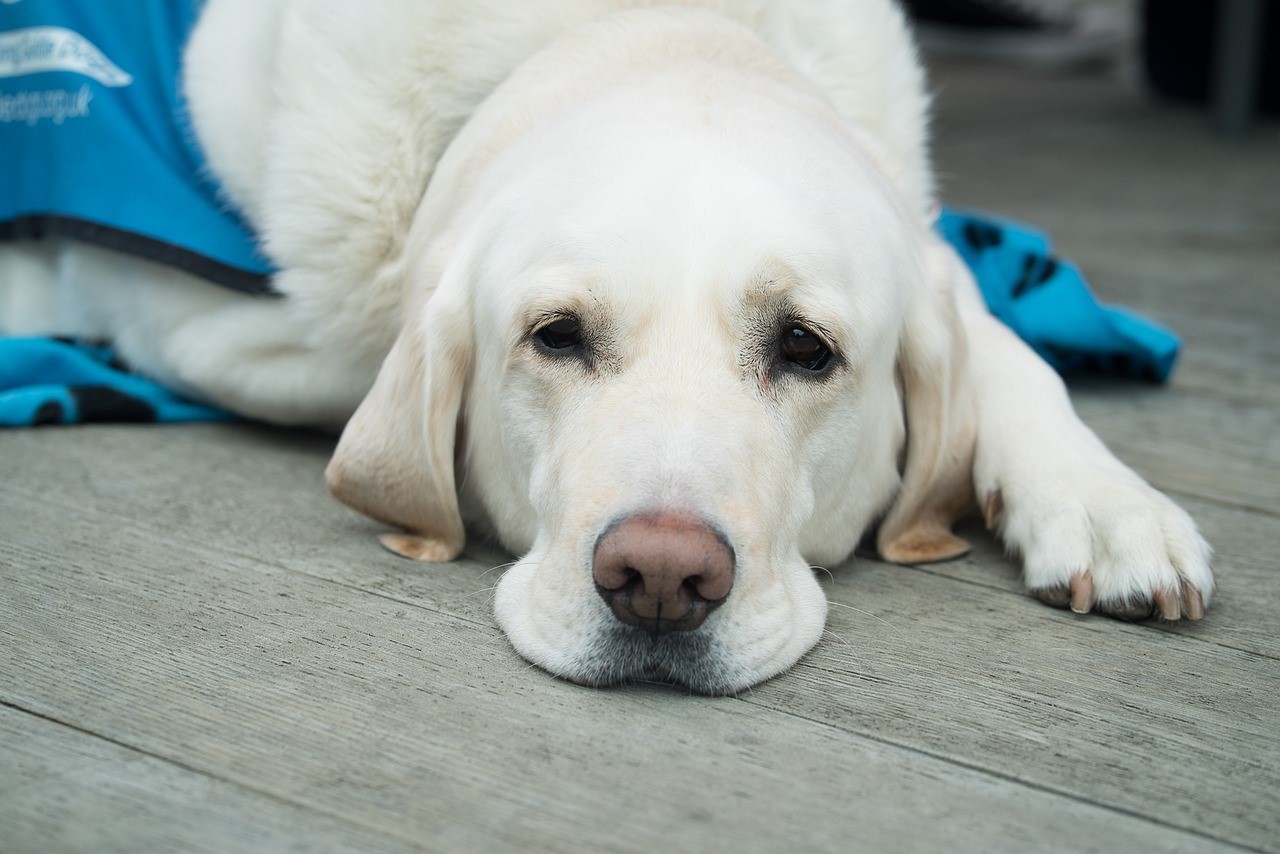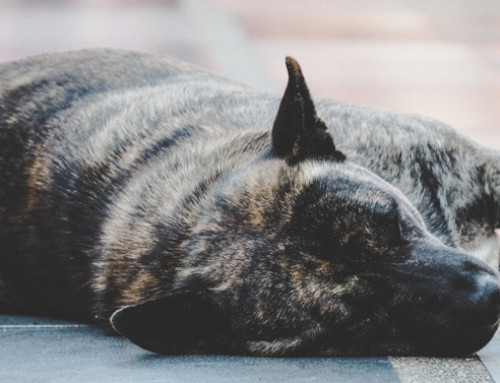We all dread the thought of our dogs growing old, slowing down or experiencing pain. What most of us don’t know is; dogs can slow down due to age or as a result of joint problems, in particular in the hips. If your dog starts showing a sudden unwillingness to move around, it’s time to take action.
Dogs are prone to hip problems the most common being dysplasia. Understanding such conditions among many others is the key to keeping your dog’s hips healthy.
What is Dysplasia?
Dysplasia is a medical term used to refer to the abnormal development/growth of tissues/organs. The condition usually affects the ball and socket joint in the hips. Dogs suffering from this skeletal condition don’t have properly developed hip joints which can cause painful grinding and rubbing during movement. If left untreated, hip dysplasia can cause the hip joint to deteriorate and lose function.
The condition reduces a dog’s overall quality of life. It’s not only painful for the dog, but also for dog owners to watch.
How do you know if your dog has Hip Problems?
The most common symptom of bad hips or hip problems in dogs is mobility problems. Your dog starts showing signs when standing, walking, jumping, running or engaging in any other activity which requires movement. Once you realise your dog has mobility problems, a complete physical examination must be done to establish the exact cause. Your dog can develop mobility problems because of many conditions such as arthritis, dysplasia, back problems, neurological disorders and even tumors in severe cases. All these conditions are known to interfere with a dog’s normal movement.
If the mobility problems are traced to the hips and dysplasia is suspected (since it is the most common hip condition in dogs), a standard hip examination must be done to confirm this. A veterinary must perform a complete physical examination which will probably include feeling the looseness in the dog’s hip joints, observing how they walk, and also X Rays to confirm what the issues may be.
Causes of Hip Problems
Arthritis is a common cause of hip problems in dogs. Research studies show approximately 20% of all dogs suffer from arthritis sometime in their lifetime. The problem can be traced to many causes from genetics to joint injuries.
Hip Dysplasia is another common cause of hip problems in dogs. Hip Dysplasia begins with genetics. The condition is linked to genes which help to form hip cartilage and bone. These findings were made in a study involving German Shepherd dogs, one of the dog breeds that is most affected by CHD. [1] Although genetics play a crucial role in the development of hip problems in dogs, many factors amplify the problem, i.e., nutrition, weight, activity, and growth levels.
Large and giant breed dogs which tend to be more susceptible to arthritis and hip dysplasia have special nutrition needs. For instance, genetically predisposed puppies should be fed with foods which prevent excessive growth since such foods increase skeletal disorder risks.
Improper nutrition, obesity, and too much or too little exercise can also increase skeletal disorder risks.
Symptoms of Hip Problems
To keep your dog’s hips healthy, you need to understand the symptoms and be on the lookout for them. Whilst hip problems can affect a dog at any age, the underlying condition dictates the time symptoms start showing which could be when a dog is months or years old.
Symptoms can also vary depending on factors like the level of inflammation, the severity of the underlying disease, joint looseness and how long the dog has suffered.
Common symptoms include; decreased movement, decreased activity, difficulty jumping/running, rising or climbing stairs, grating joint movement, hip joint looseness, hind end lameness, swaying gait or “bunny hopping”, narrow stance, reduced thigh muscle mass and enlarged shoulder muscles (as the dog compensates for the hind end). Dogs also tend to be stiff and show signs of pain during movement.
Which Dogs are most likely to have Hip Problems?
Hip issues caused by arthritis tend to affect larger breeds although all dogs are at risk. Hip Dysplasia tends to affect large and giant breed dogs. German Shepherd, Rottweiler, Saint Bernard, Golden Retriever, Old English Sheepdog, Labrador Retriever, Alaskan Malamute, Samoyed and the Newfoundland dog breeds are prone to dysplasia-related hip issues.
Besides breed, there are other characteristics that make a dog more prone to hip problems. For instance, dogs with longer bodies are more likely to suffer from the disease (for example sausage dogs). Dogs with a high BMI ratio (ie overweight), as well as dogs which have suffered hip joint damage/problems in the past, are more susceptible regardless of their breed.
Age is also a factor so it’s important to observe your pet as he or she moves into the senior years.
Treatment & Pain Management
Your dog’s hip problems can be treated in several ways ranging from modifying your dog’s lifestyle to surgery. Non-surgical treatments are highly recommended although severe cases might demand surgery. Your vet may suggest treatment options like;
- Joint fluid modifiers
- Physical therapy
- Exercise restriction (such as on hard surfaces)
- Weight reduction (to reduce stress on the hip joint)
- Anti-inflammatory medication
- Supplements
The treatment options are dictated by the severity of the case. Surgery is an option for severe cases which can’t be treated by the above options. Surgery can improve the function of the hip joint (ball and socket joint) by reshaping the pelvic bone. There is also the option of a total hip replacement where the entire hip joint is replaced with plastic or metal implants eliminating most, if not all discomfort caused by hip dysplasia and Fermoral Head Ostectomy that involves creating a false joint (cutting/reshaping the femoral head) to reduce discomfort during movement.
There are also many natural remedies you can try, including massage, acupuncture and water therapy, and other options which may stave off the need for an operation.
Prevention is better than cure!
It’s always better to learn how to prevent dog hip problems especially if you own a dog that is genetically predisposed to hip issues. Luckily, some measures can be taken:
- Breeding Line – If you are planning on getting a large/giant breed puppy, you should consider breeders who can demonstrate that their line of dogs does not suffer from Hip Dysplasia.
- Food – The amount of food, and type of food (calories) your dog eats between ages 3 and 10 months have a significant effect on the genes responsible for causing hip problems like Dysplasia. In simple terms, nutrition can dictate the development of CHD with high-calorie/high-carbohydrate diets being the worst since they cause a dog’s frame to grow very fast (faster than the cartilage can keep up). As a result, portion-control is an effective preventative measure since obesity increases the chances of your dog developing hip problems. Dog diets should also be balanced and appropriate according to the dog breed. There is scientific research evidence showing that poor nutrition increases Hip Dysplasia risks in dogs susceptible to the disease. [2].
- Exercise – Engaging your dog in activities like walking, running and swimming can also help keep your dog’s hips healthy by ensuring your dog maintains a healthy muscle mass. However, although exercise is recommended, it should be done in moderation. You should avoid overindulging your dog in activities that require sudden changes in direction, sudden jumping or stopping as such activities can put a lot of strain on the hips. Exercise should also be done on steady surfaces for the same reason.
- Regular examination – Lastly, every dog owner should examine and observe their dog regularly to identify any unusual movements that could indicate a hip problem and also check for injuries since hip problems can also be triggered by physical injuries which have been left untreated.
Of course, if you suspect anything, your first port of call should be your vet.
Unfortunately it can be quite expensive to help your dog manage pain from Arthritis (around $1,000 each year), but Pet Insurance can help with the vet bills if you have it, but to avoid any pre-existing condition exclusion being applied to you policy as a precautionary measure it’s important to take out pet insurance before there is any sign of an issue with your pet, especially if you have a dog that could be prone to these issues.
References:
[1] http://journals.plos.org/plosone/article?id=10.1371/journal.pone.0096618







Leave A Comment